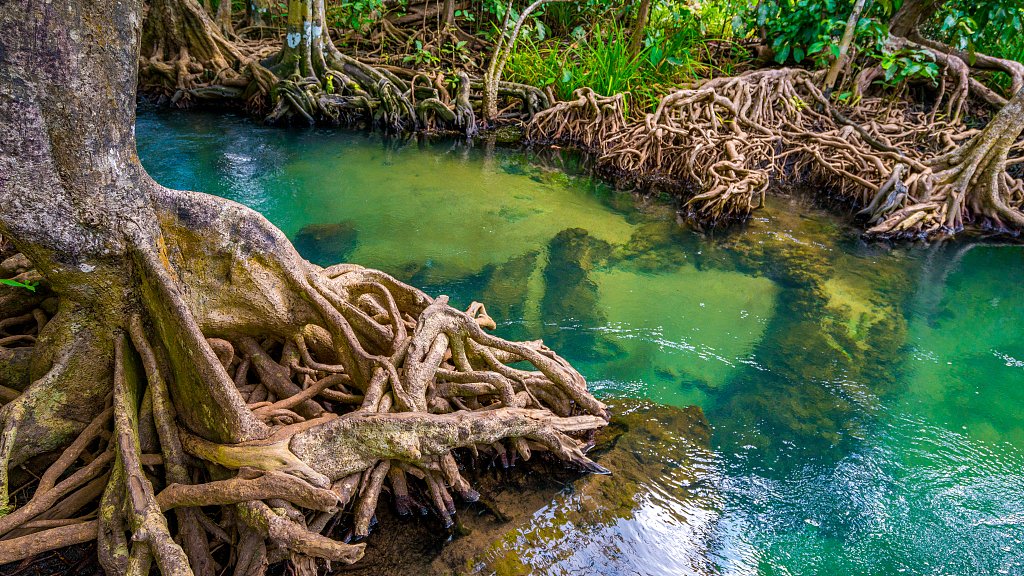Biodiversity Talks | Mangroves: Nature's Unsung Heroes
June 26th marks the International Day for the Conservation of the Mangrove Ecosystem! Mangroves, often referred to as the "rainforests of the sea," are extraordinary ecosystems that thrive at the intersection of land and sea. With their intricate network of roots submerged in brackish water, mangroves play a vital role in supporting biodiversity, protecting coastal areas, mitigating climate change, and providing numerous benefits to both humans and nature.
It is crucial to recognize the immense value these unique habitats hold and the urgent need to protect and restore them. And let's explore the ecological significance of mangrove ecosystems in this edition of Biodiversity Talks by GREENEXT!
What is a mangrove ecosystem?
©National Geographic
The mangrove ecosystem is a coastal marine ecosystem that is found in the intertidal zones of tropical and subtropical regions around the world. Mangroves are trees and shrubs that have adapted to living in the salty, oxygen-poor soils of the intertidal zone, where they form dense forests that provide a range of benefits to both humans and the environment. The mangrove ecosystem is a complex web of life that supports a wide variety of flora and fauna, including fish, crabs, shrimp, birds, and mammals.
Mangroves play a crucial role in protecting coastlines from erosion, storm surges, and tsunamis, and are also important for maintaining water quality, sequestering carbon, and providing habitats for numerous species.
The International Day for the Conservation of the Mangrove Ecosystem is an important opportunity to highlight the importance of mangroves and the need to protect them. It is a chance to raise awareness of the threats facing the mangrove ecosystem and to promote conservation efforts that can help to ensure the long-term survival of these important habitats.
The role of mangrove ecosystems in fighting against climate change
Mangrove ecosystems play an important role in mitigating the impacts of climate change. Mangroves are a unique type of coastal forest that grow in the intertidal zone of tropical and subtropical regions. They are characterized by their ability to grow in saline water and provide a range of ecosystem services, such as carbon sequestration, coastal protection, and habitat for various species.
Carbon Sequestration
©apple
One of the primary ways in which mangroves help fight climate change is through carbon sequestration. Mangroves are highly efficient at storing carbon in their biomass and in the soil. Studies have estimated that mangroves can store up to five times more carbon per hectare than other tropical forests.
Mangrove forests cover just 0.1 percent of the planet's surface but store up to 10 times more carbon per hectare than terrestrial forests. This carbon-storing superpower makes mangroves a critical part of the solution to climate change.
Coastal Protection
©vcg
The dense root systems of mangroves help to stabilize sediments and reduce erosion, which in turn protects coastal areas from the impacts of storms and floods. Mangroves can also act as a buffer against rising sea levels, helping to prevent saltwater intrusion into freshwater aquifers and protecting the livelihoods of local communities.
As a matter of fact, studies have shown that mangroves can reduce wave height by up to 66%, and can absorb up to 90% of a wave's energy, which makes mangroves a valuable tool that helps to reduce the impacts of climate change by protecting coastal communities from storm surges and sea level rise.
Fisheries
©Tim Laman/WWF
Mangroves also provide important habitat for a range of species, including fish, birds, and mammals. These species play an important role in the food web of coastal ecosystems and support the livelihoods of many local communities. The World Wildlife Fund estimates that mangroves provide livelihoods for over 100 million people worldwide.
The threats mangrove ecosystems are facing
©UNESCO
Despite its great importance, the mangrove ecosystem is under threat from a variety of human activities, including deforestation, land use change, aquaculture, and climate change. These activities are putting immense pressure on the mangrove ecosystem, which is already one of the most threatened ecosystems on the planet.
According to the International Union for Conservation of Nature (IUCN), around 35% of mangrove forests worldwide have been lost since 1980 due to a range of factors, including coastal development, agriculture, aquaculture, and logging. And it is estimated that by 2100, up to 40% of mangroves could be lost due to sea level rise alone.
As coastal cities grow and expand, mangrove ecosystems are often destroyed or converted for urban development. In Indonesia, for example, it is estimated that 60% of Jakarta's mangroves have been destroyed over the past three decades due to urbanization.
What can we do to bring back mangroves?
It is crucial that efforts are made to protect and restore mangrove ecosystems in order to maintain their important role in mitigating the impacts of climate change. This can be achieved through measures such as protected area designation, sustainable management practices, and reforestation efforts.
But as citizens, we can also take several actions to help protect mangrove ecosystems:
Reduce plastic use: Plastic pollution is one of the biggest threats to mangrove ecosystems. You can reduce their plastic use by bringing reusable bags, bottles, and containers, and properly disposing of their waste.
Support sustainable tourism: Tourism can have a significant impact on mangrove ecosystems. Supporting sustainable tourism can be a great way to make a change, such as eco-tourism, which is designed to minimize environmental impacts.
Participate in conservation efforts: You can get involved in local conservation efforts, such as mangrove planting and clean-up events, to help restore and protect mangrove ecosystems.
Educate others: Raising awareness about the importance of mangrove ecosystems and the threats they face can help encourage others to take action to protect them. Start by sharing this article with your friends, family, and community to help spread the word.








